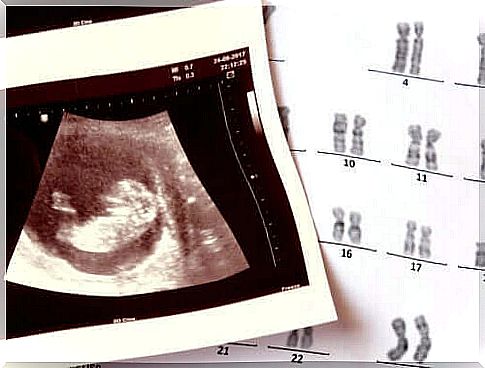Symptoms And Causes Of The Condition Anencephaly

Congenital defects are something that worries most people who are expecting a baby. Cardiovascular, neurological and physiological malformations, among others. Many of these conditions require long-term treatment. And in some cases, children can live with them for many years. But what would happen if the cerebrum was never formed? That’s what anencephaly is all about. Although it is a rare disease, the mother’s suffering is enormous. This is because there is no treatment for anencephaly and it is incompatible with life.
What is anencephaly?
Anencephaly is a congenital disease that consists in the absence of development of certain parts of the nervous system in the child’s skull.
A few decades ago, it was a more common condition, according to a review by Dr. Bermejo Sanchez which was published in Spain in 2010. But the incidence has decreased significantly.
From an embryonic point of view, an organ called the prosencephalon does not develop properly. In healthy infants, this organ is what gives rise to most of the brain.
This health condition is among the neural tube defects , a group of congenital pathologies that also include spina bifida.
How does anencephaly manifest itself?
The most obvious sign of anencephaly is the characteristic cranial deformity, where most of the contents of the head are missing. Affected infants often also have several significant deformities on the face.
Because the brain is the part of the body that is responsible for so many executive functions, life is incompatible without it. For this reason, there is no treatment for anencephaly, and if the baby is born alive, its death will occur during the first hours or days after birth.
The causes of anencephaly
Experts from the Centers for Disease Control and Prevention (CDC) assure us that the exact causes of anencephaly are unknown. However, we know that it arises as a result of the interaction between genetic and environmental factors.
Changes in the chromosomes (structures that hold all the information in the cells) and certain specific mutations can contribute to its formation. Exposure to certain environmental toxins has also been studied as a possible determinant. However, the research results are not final at the moment.
Low folic acid intake in the months before and during pregnancy can be crucial for the development of the disease. We will discuss this a little later.

Risk factors for anencephaly
Mothers who have poor maternity care or who follow unhealthy lifestyle habits (unbalanced diet, smoking, alcoholism) tend to have major health complications during pregnancy. For example, some congenital diseases such as anencephaly.
During prenatal evaluations, the midwife or obstetrician should prescribe folic acid supplements to prevent neural tube defects. When a mother does not attend these consultations early, she is likely to be deficient in this micronutrient and increase the risk of developing the disease.
Is there any treatment?
Anencephaly is a serious and incurable condition that causes the baby to die shortly after birth.
An article entitled “Scientific ethics for abortion in anencephaly” (2011) states the following:

Final recommendations
Anencephaly is a complex and rare pathology, thanks to modern medicine. Although there is no treatment for anencephaly, measures as basic as early obstetric controls, including prenatal consultation and daily consumption of folic acid supplements, can greatly reduce the risk of developing the disease.









